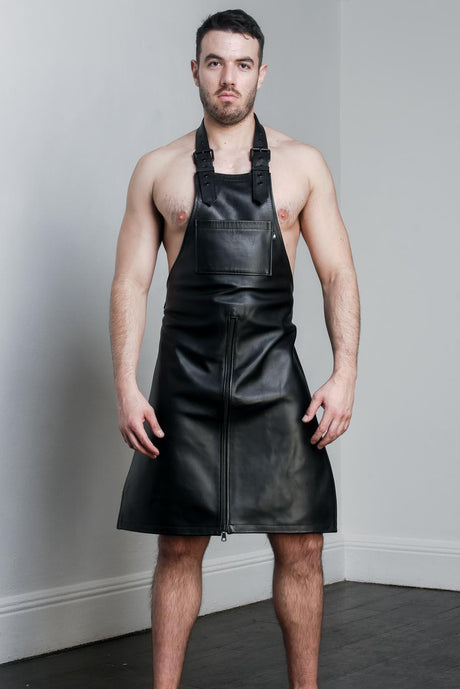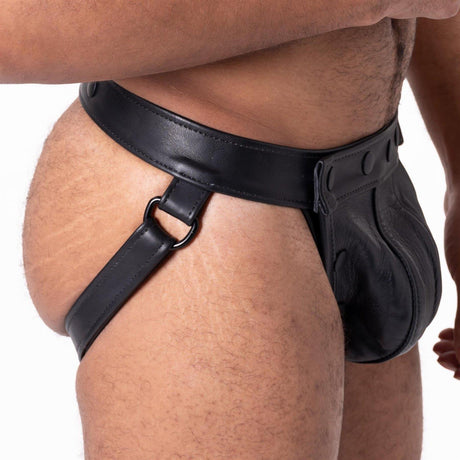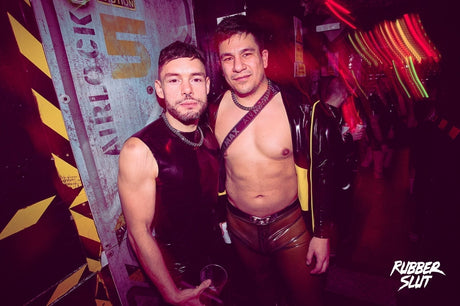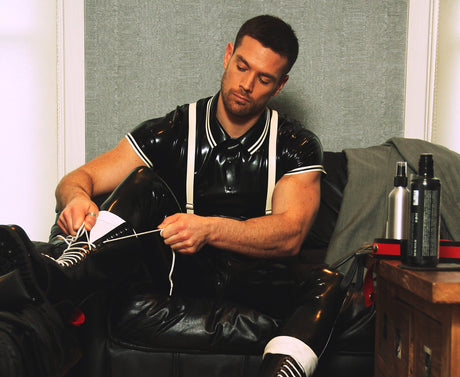Fetish gear isn’t just about what looks hot—it’s about identity, history, and the coded language of desire. From classic biker leathers to shiny rubber suits, gay fetish style has evolved in its own unique way, drawing from hyper masculine archetypes, subcultural aesthetics, and deeply personal coming-of-age experiences.
1950s–60s: The Birth of Leather Identity
The roots of modern gay fetish style lie in the post-war leather scene. Veterans returned home, but many found brotherhood, purpose, and expression not in suburbia but in underground biker clubs. Leather jackets, engineer boots, and military surplus weren’t just practical—they became a signal. In the years before pride, visibility came coded, and gear was the language.
Tom of Finland’s illustrations—hypermasculine, confident, and uniformed—cemented leather as erotic iconography. For many, this was the first glimpse of queerness portrayed as powerful, desirable, and strong.
1970s–80s: Codification and Club Culture
As gay liberation took hold, so did the codification of fetish aesthetics. Hanky codes, harnesses, armbands, and boots signalled desires and preferences in dark clubs and backrooms. Leather bars flourished, and fetish nights began to emerge across the US and Europe.
It was also a time of DIY—gear often came from army surplus shops, motorbike stores, or was handmade. The idea of “fetish fashion” as something you purchased ready-made was still forming. Rubber gear, at this point, was niche but gaining interest, especially in European circles.
1990s–2000s: From Utility to Fetish Playground
Rubber stepped more into the spotlight in the 90s as the alternative club and rave scene kicked off. Cool, form-fitting, and futuristic, it offered a visual counterpoint to leather’s classic, rugged masculinity. It also appealed to those into transformation, enclosure, or the theatrical edge of fetish play.
The 90s also saw the emergence of hi-vis, sportswear and chav-influenced kinks: trackies, Nike TNs, and track suits made their way from council estates into club basements. This wasn’t just trend-following—it reflected deeper erotic ties to class, toughness, and the swagger of working-class masculinity.
2010s–Today: Heritage, Hybrids & New Visibility
Today’s gear scene is more visible, diverse, and self-aware. Traditional leather and rubber looks still dominate events like Folsom or Darklands, but the edges have expanded. Pup hoods, skinhead looks, rubber of all colours and style not to mention SWAT and leather biker suits all claim their space in the fetish wardrobe.
Heritage matters—many still first discover kink through early fantasies but these formative images stick, and the gear we wear later often echoes those moments. At the same time, new materials, better access, and global inspiration (thanks, Instagram) have blurred old rules. Customisation is king, and for many, gear is both play and performance—ritual and rebellion.
Gay fetish style isn’t really about trends—it’s about tradition, identity, and transformation. What we wear says who we are, what we want, and where we’ve been. Whether you’re laced into tall boots or sliding into a tight rubber catsuit, you’re part of a lineage that’s as much about resistance as it is about pleasure. And that, in every sense, is powerful.



























